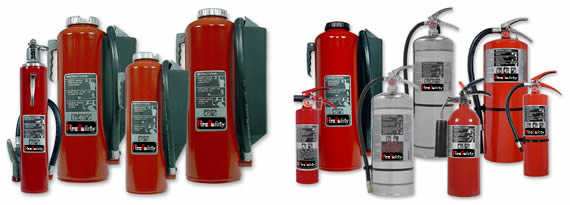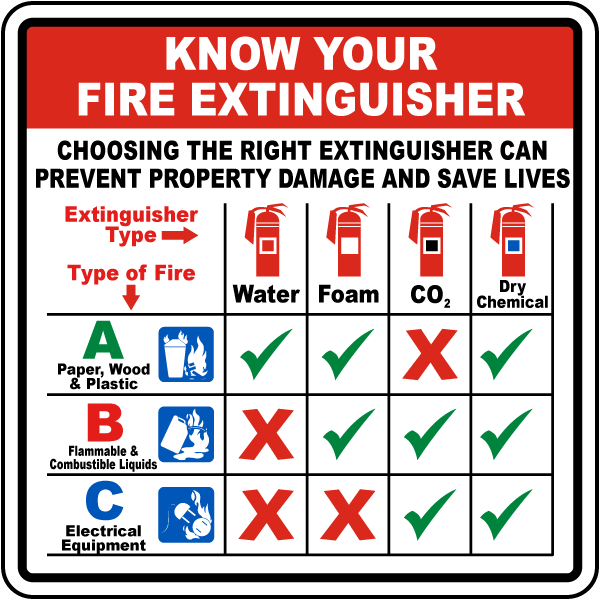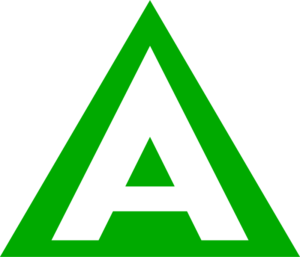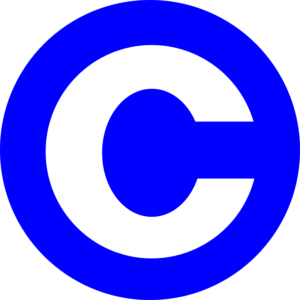
Fire Extinguisher
Fire Extinguishers
How do you know the right fire extinguisher to use to protect your property?
This is where a certified firm is needed. Feel free to contact us and schedule a free appointment to make your choice right and hassle free. But, its always good to educate yourself.

The main fire extinguisher used is an ABC dry chemical.
All restaurant kitchens need a K class fire extinguisher installed within a travel distance of 30ft from cooking area.
Fire extinguishers are required within 75ft of travel distance from any location in the building.
All fire extinguisher are required to have an annual inspection from a certified firm.
A fire extinguisher must be installed in a common area, not behind a locked door.
An arrows should be located above the fire extinguisher for easy locating in large rooms or where visual obstructions occur.
State Fire Marshal office follows NFPA 10 regulations. If your inspecting firm does something you are unsure about, make them prove that law in NFPA 10 or report them to your State Fire Marshals office.
If you have questions, you can email us and we will have one of our experts get back to you. Also, check out our frequently asked questions, your question might of been answered already.
When deciding which fire extinguisher you should place in your business, a few key factors take place. The type of hazards, the square footage of property, and configuration of the building. NFPA 10 states any building under 3000 sq ft in a light hazard occupancy is required to have one 2A:40B:C rated fire extinguisher, as long as the travel distance does not exceed 75 ft. All major fire extinguisher manufactures have the same A:B:C ratings, only thing that will change is the dimensions of the extinguishers.
FIRE EXTINGUISHER | 2.5LBS | 5LBS | 10LBS | 20LBS |
UL/ ABC RATING | 1-A: 10-B:C | 3-A: 40-B:C | 4-A: 80-B:C | 10-A: 120-B:C |
DISCHARGE TIME | 9 SEC | 14 SEC | 21 SEC | 28 SEC |
CHARGED WEIGHT | 5LBS | 10LBS | 17LBS | 32LBS |
DIMENSIONS | ||||
HEIGHT | 14 ¼ in | 16 ¾ in | 20 ½ in | 22 ½ in |
WIDTH | 5 ½ in | 8 ½ in | 8 ¾ in | 9 ½ in |
DEPTH | 3 ½ in | 4 ½ in | 5 ¼ in | 7 ¼ in |
covering lake charles, jennings, lafayette, leesville, deridder, oakdale, louisiana. fire safety protection services, new fire extinguishers, kitchen hood, commercial kitchen hood cleaning, install, inspection, inspect, new, service, certify and repair.




